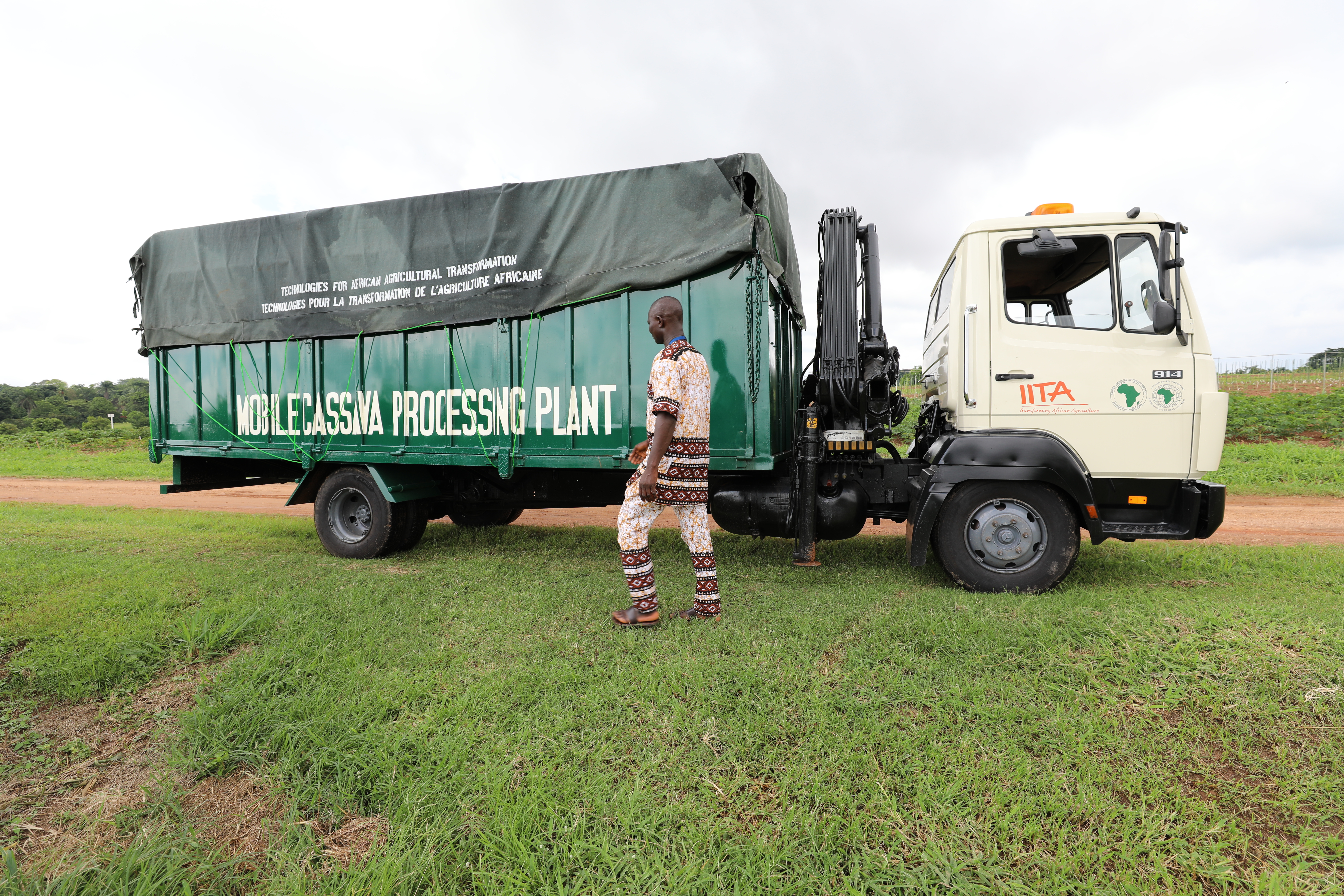Mobile Cassava Processing Plant
Summary
Cassava commercialization is faced with a double-edged problem: industrial cassava processors often located in the cities experience scarcity of fresh cassava roots to operate the processing plants while cassava farmers, mostly located in rural areas, lack market access to sell their roots partly due to inaccessible rural roads. The rural sector lacks the necessary infrastructure (electricity, water, etc.) and labor to attract investments in processing factories. Since cassava is very perishable and bulky, the risk of postharvest losses and cost of transporting cassava roots to city-based factories are high. Hence, most cassava processing factories in sub-Saharan Africa, established in the cities, are not competitive and are in a state of paralysis. Many investments in cassava processing factories have become moribund and bankrupt. The IITA TAAT Cassava Compact Project has designed a Mobile Cassava Processing Plant (MCPP) as an alternative investment approach for the private sector to avoid the problems associated with investments in expensive immobile processing factories, inconsistent and inadequate supply of raw materials, high cost of transporting bulky fresh roots to the city-based factories, and the loss in both the quality and quantity of roots that reach the factory.
About the Solution
The specially constructed MCPP consists of modern processing machinery and an electricity generator housed on a six-wheel machinery carrier equipped with a loader crane. Both the back sides and the tailgate of the truck open flat to form a larger flatbed, platform or processing workspace. Depending on the product for which the mobile machinery was tailored, processing operations can be completed on the workspace combined with the ground-level workspace. Specific standard operating procedures are used for processing the product of choice.
The MCPP is carefully equipped with a specific set of machinery tailored to process a targeted, shelf-stable, and market-demanded cassava product such as high-quality cassava cake, wet fufu, or wet starch, and gari which can be transported with ease and at low cost to a centrally located factory for drying and packaging.
The mobile unit is made of a six-wheel truck with crane, processing machinery, electricity generator, water pump, water storage tank and other accessories.
The MCPP is an engineering construction. The unit is driven to the farm-gate for processing of cassava roots into the products of choice for which the unit was constructed to make.
Commercialization
Undergoing commercial testing
Solution Images
Institutions




Solution Comments
ProPAS Admin
Stage of Development: 4 - Formalized stage
Appeal to Clients: 4 - Widespread
Impression of the Solution
I like the plant